Redirected from Kinabalu montane alpine meadows)
Mount Kinabalu (Malay: Gunung Kinabalu) is a prominent mountain on the island of Borneo in Southeast Asia. It is located in the East Malaysian state of Sabah and is protected as Kinabalu Park, a World Heritage Site. Kinabalu is the highest peak in Borneo's Crocker Rangeand is the highest mountain in the Malay Archipelago as well as the highest mountain in Malaysia.[1] Mount Kinabalu is also the 20th most prominent mountain in the world by topographic prominence.[2]
In 1997, a re-survey using satellite technology established its summit (known as Low's Peak) height at 4,096 metres (13,438 ft) above sea level, which is some 6 metres (20 ft) less than the previously thought and hitherto published figure of 4,101 metres (13,455 ft).[3]
Mount Kinabalu includes the Kinabalu montane alpine meadows ecoregion in the montane grasslands and shrublands biome. The mountain and its surroundings are among the most important biological sites in the world, with between 5,000 and 6,000 species of plants, 326 species of birds, and more than 100 mammalian species identified. Among this rich collection of wildlife are famous species such as the gigantic Rafflesia plants and the orangutan. Mount Kinabalu has been accorded UNESCO World Heritage status.[4][5][6]
Low's Peak can be climbed quite easily by a person in good physical condition and there is no need for mountaineering equipment at any point on the main route.[7] Other peaks along the massif, however, require rock climbingskills.
Biology
Mount Kinabalu along with other upland areas of the Crocker Range is known worldwide for its botanical and biological species biodiversity with plants of Himalayan, Australasian, and Indomalayan origin. A recent botanical survey of the mountain estimated a staggering 5,000 to 6,000 plant species (excluding mosses and liverworts but including ferns),[3][8][9][10][11][12]which is more than all of Europe and North America (excluding tropical regions of Mexico) combined. It is therefore one of the world's most important biological sites.
In 2015, a major Malaysian-Dutch study showed that the unique flora, fauna, and fungi on the mountain summit are younger than the mountain itself, and have evolved from both local and distant montane ancestors.[13]
Flora
The flora covers the mountain in zones of different types of habitat as one climbs up, beginning with a lowland belt of fig trees and insectivorous pitcher plants. Then between 2,600 to 3,200 m (8,530 to 10,499 ft) is a layer of short trees such the conifer Dacrydium gibbsiae and dwarf shrubs, mosses, lichens, liverworts, and ferns. Finally many of the world's richest variety of orchids are found on the high rockier slopes.
These plants have high levels of endemism (i.e. species which are found only within Kinabalu Park and are not found anywhere else in the world). The orchids are the best-known example with over 800 species including some of the highly-valued Paphiopedilum slipper orchids, but there are also over 600 species of ferns (more than the whole of Africa's 500 species) of which 50 are found nowhere else, and the richest collection in the world for the Nepenthes pitcher plants (five of the thirteen are found nowhere else on earth) which reach spectacular proportions (the largest-pitchered in the world being the endemic Nepenthes rajah).[3][14][15] The parasitic Rafflesia plant, which has the largest single flower in the world, is also found in Kinabalu (particularly Rafflesia keithii whose flower grows to 94 centimetres (37 in) in diameter),[3]though it should be noted that blooms of the flower are rare and difficult to find. Meanwhile another Rafflesia species, Rafflesia tengku-adlinii, can be found on the neighbouring Mount Trus Madi and the nearby Maliau Basin.
Its incredible biodiversity in plant life is due to a combination of several unique factors: its setting in one of the richest plant regions of the world (the tropical biogeographical region known as western Malesia which comprises the island of Sumatra, the Malay Peninsula, and the island of Borneo), the fact that the mountain covers a wide climatic range from near sea level to freezing ground conditions near the summit, the jagged terrain and diversity of rocks and soils, the high levels of rainfall (averaging about 2,700 millimetres (110 in) a year at park HQ), and the climatic instability caused by periods of glaciation and catastrophic droughts which result in evolution and speciation. This diversity is greatest in the lowland regions (consisting of lowland dipterocarp forests, so called because the tree familyDipterocarpaceae are dominant). However, most of Kinabalu's endemic species are found in the mountain forests, particularly on ultramafic soils (i.e. soils which are low in phosphates and high in iron and metals poisonous to many plants; this high toxic content gave rise to the development of distinctive plant species found nowhere else).[3]
Fauna
The variety of plant life is also habitat for a great variety of birds and mammals. There are some 326 species of birds in Kinabalu Park, including the spectacular rhinoceros hornbill, mountain serpent-eagle, Dulit frogmouth, eyebrowed jungle flycatcher, and bare-headed laughingthrush. Twenty-four birds are mainly found on the mountain. The mountain is home to some 100 mammalian species mostly living high in the trees, including one of the four great apes, the orangutan (though sightings of these are uncommon; estimates of its numbers in the park range from 25 to 120).[3] Other mammals include three kinds of deer, the Malayan weasel (Mustela nudipes), oriental small-clawed otter (Aonyx cinerea), and leopard cat (Felis bengalensis). Endemic mammals include the black shrew (Suncus ater) and Bornean ferret-badger (Melogale everetti).
Endemic annelids number less than a dozen known species but include the Kinabalu giant red leech that preys on various earthworms, including the Kinabalu giant earthworm.[16]
In the summit zone, at least 26 endemic species of land snail exist.[17]
In 2012, a major scientific expedition, jointly organised by the Malaysian Sabah Parks and the Dutch Naturalis Biodiversity Center, performed DNA analysis of several dozen endemic flora, fauna, and fungi, to understand the evolutionary origin of the unique biodiversity of Kinabalu.
Threats and preservation
See also: Deforestation in Borneo
The steep mountainsides with poor soil are not suitable for farming or for the timber industry so the habitats and animal life of Kinabalu remain largely intact, with about a third of the original habitat now degraded. Kinabalu Park was established in 1964 and the nearby mountains were protected as the Crocker Range National Park in 1984. However even national park status does not guarantee full protection, as logging permits were granted on Trus Madi in 1984.[18]
Geology
Mount Kinabalu is essentially a massive pluton formed from granodiorite which is intrusive into sedimentary and ultrabasic rocks, and forms the central part, or core, of the Kinabalu massif. The granodiorite is intrusive into strongly folded strata, probably of Eocene to Miocene age, and associated ultrabasic and basic igneous rocks. It was pushed up from the earth's crust as molten rock millions of years ago. In geological terms, it is a very young mountain as the granodiorite cooled and hardened only about 10 million years ago. The present landform is considered to be a mid-Pliocenepeneplain, arched and deeply dissected, through which the Kinabalu granodiorite body has risen in isostatic adjustment. It is still pushing up at the rate of 5 mm per annum. During the Pleistocene Epoch of about 100,000 years ago, the massive mountain was covered by huge sheets of ice and glaciers which flowed down its slopes, scouring its surface in the process and creating the 1,800-metre (5,900 ft) deep Low's Gully (named after Hugh Low) on its north side. Its granite composition and the glacial formative processes are readily apparent when viewing its craggy rocky peaks.[3]
History
British colonial administrator Hugh Low made the first recorded ascent of Mount Kinabalu's summit plateau in March 1851. Low did not scale the mountain's highest peak, however, considering it "inaccessible to any but winged animals".[19] In April and July 1858, Low was accompanied on two further ascents by Spenser St. John, the British Consul in Brunei.[3]The highest point of Mount Kinabalu was finally reached in 1888 by zoologist John Whitehead.[3] British botanist Lilian Gibbs became the first woman and the first botanist to summit Mount Kinabalu in February 1910.[3]
Botanist E. J. H. Corner led two important expeditions of the Royal Society of Great Britainto the mountain in 1961 and 1964.[3] Kinabalu National Park was established in 1964. The park was designated a natural World Heritage Site in 2000.[20]
2015 earthquake
Main article: 2015 Sabah earthquake
On 5 June 2015 at 07:15 MST, the area around Mount Kinabalu was damaged by an earthquake. Eighteen people, including hikers and mountain guides, were killed by the earthquake and a massive landslide that followed it. Ranau and many parts of Sabah West Coast were affected and Donkey Ear's Peak was heavily damaged.[21]
Six days before the earthquake, around ten western tourists (comprising six men and four women from Canada, Germany, Netherlands and the United Kingdom)[22] "stripped and urinated at the mountain (which locals believe has angered the spirit at the sacred place)".[23][24] The tourists also allegedly shouted vulgarities when they were told to desist by their mountain guide,[25][26] but this was later dismissed by the judge in their trial.[citation needed] This provoked outrage among certain Sabahans, who want all of the alleged offenders charged in native court and forced to pay the "sogit", a type of compensation, given in the form of money or livestock, to appease the aggrieved party according to local Kadazan-Dusun customs. It is imposed on wrongdoers for the purpose of appeasing "the aggrieved", thus placating the community.[27] However, as most of the detained tourists have been released from Malaysia's prison and escaping native court, the local villagers had to perform their own rituals.[28]
Climbing Permit
Sabah Parks grants a summit-climbing permit only to climbers who own bed at mountain huts. Due to the limited number of beds at mountain huts, only 130 persons are allowed to climb Mount Kinabalu per day. There are only 3 types of mountain hut owned by either Sutera Sanctuary Lodges, Mountain Torq or Sabah Parks. Accommodation package can be purchased directly from them. (The hut owned by Sabah Parks is restricted only to Malaysian.) Alternatively, you can purchase all-inclusive package from local travel agency such as Borneo Trails, Borneo Excursions, and Tropika Events & Travel or international travel agency such as Expedia.
Climbing Route
Climbers must be accompanied by accredited guides at all times due to national park regulations. There are two main starting points for the climb: the Timpohon Gate (located 5.5 km from Kinabalu Park Headquarters, at an altitude of 1,866 metres (6,122 ft)),[29] and the Mesilau Nature Resort. The latter starting point is slightly higher in elevation, but crosses a ridge, adding about two kilometres to the ascent and making the total elevation gain slightly higher. The two trails meet about two kilometres before Laban Rata.
Mount Kinabalu climbing trail at lower elevations (left) and on the summit plateau (right)
Accommodation is available inside the park or outside near the headquarters. Sabah Parks has privatised Mount Kinabalu activities to an organisation called Sutera Sanctuary Lodges. The mountain may be climbed on a single day trip, or hikers may (usually) stay one night at Laban Rata Resthouse at 3,270 metres (10,730 ft) to complete the climb in 2 days, finishing the ascent and descending on the second day. The majority of climbers begin the ascent on day one of a two-day hike from Timpohon gate at 1,866 metres (6,122 ft), reaching this location either by minibus or by walking, and then walk to Laban Rata. Most people accomplish this part of the climb in 3 to 6 hours. Since there are no roads, the supplies for the Laban Rata Resthouse are carried by porters, who sometimes bring more than 35 kilograms of supplies on their backs. Hot food and beverages are available at Laban Rata. Most rooms have no hot water in the bathrooms and whilst the dining area is heated, most rooms are not. The last 2 kilometres (6,600 ft), from the Laban Rata Resthouse at 3,270 metres (10,730 ft) to Low's Peak (summit) at 4,095.2 metres (13,436 ft), takes between 2 and 4 hours. The last part of the climb is on bare granite rock.
Given the high altitude, some people may suffer from altitude sickness[30] although staying overnight at the lodges before the climb and climbing at a lower rate of ascent may reduce the likelihood of this happening.
Low's gully
Low's Gully (named after Hugh Low who first looked down into it in 1851) is a 1,800-metre (5,900 ft) deep gorge carved out by glaciation on the north side of Mount Kinabalu, that is one of the least explored and most inhospitable places on earth. In March 1994 two British Army officers were severely criticised after leading a party of 7 British and 3 Hong Kongsoldiers in an attempt to abseil and climb down into the gully that required extensive rescue efforts from both the RAF and the Malaysian army. The party were not equipped with radios and the 2 officers and 3 Hong Kong soldiers were trapped for 16 days and did not eat for five days before being rescued when stretchers were lowered by helicopter. The breakaway party of five completed the first descent of the gully in three days.[31] A book about the 31 day fight for survival entitled Descent Into Chaos was published in 1996 and a film drama The Place of the Dead was released in 1997. The first successful complete descent of Low's Gully was achieved by a 27 strong joint Malaysian-British team led by mountaineer and former British Army officer Pat Gunson in 1998.[32][33]
Tales
There are two stories that led to the main beliefs in the origin of the mountain's name.
The first derivation of the word Kinabalu is extracted from the short form for the Kadazan Dusun word 'Aki Nabalu', meaning "the revered place of the dead".
The second source states that the name "Kinabalu" actually means "Cina Balu" (which would fully mean "A Chinese Widow"). Due to the lingual influence among the Kadazan Dusun of Sabah, the pronunciation for the word "cina" (chee-na) was changed to "Kina" (kee-na).
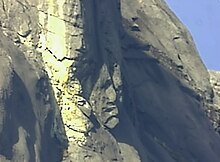
A visual illusion of a rock face on Mt. Kinabalu. Caught on camera from a location in Mesilau, December 2011.
It was told that a Chinese prince, was cast away to Borneo when his ship sank in the middle of the South China Sea. He was subsequently rescued by the natives from a nearby village. As he recovered, he was slowly accepted as one of the people of the village. Eventually, he fell in love with a local woman, and married her. Years went by, and he started to feel homesick. So he asked permission from his newly found family to go back to China to visit his parents (the Emperor and Empress of China). To his wife, he promised that as soon as he was done with his family duties in China, he would come back to Borneo to take her and their children back to China.
When he made his return to China, he was given a grand welcome by his family. However, to his dismay, his parents disagreed with him about taking his Bornean wife back to China. Worse, they told him that he was already betrothed to a princess of a neighbouring kingdom. Having no choice (due to high respect towards his parents), he obeyed with a heavy heart.
Meanwhile, back in Borneo, his wife grew more and more anxious. Eventually, she decided that she would wait for her husband's ship. However, since the village was situated far away from the coast, she couldn't afford to come to the shore and wait for him daily. Instead she decided to climb to the top of the highest mountain near her village, so that she could have a better view of the ships sailing in the South China Sea. Thus, she was then seen climbing up the mountain at every sunrise, returning only at night to attend to her growing children.
Eventually her efforts took their toll. She fell ill, and died at the top of the cold mountain while waiting for her husband. The spirit of the mountain, having observed her for years, was extremely touched by her loyalty towards her husband. Out of admiration for this woman, the spirit of the mountain turned her into a stone. Her face was made to face the South China Sea, so that she could wait forever for her dear husband's return.
The people in her hometown who heard about this were also gravely touched by this. Thus, they decided to name the mountain "Kinabalu" in remembrance of her. To them, the mountain is a symbol of the everlasting love and loyalty that should be taken as a good example by women.
Local legend among the people of Ranau, a district in Sabah, has it that St. John's Peakwas the stone which her body was turned into.
Temperature
The temperature of Mount Kinabalu usually stands from -10°C to 10°C in December to January, and 3°C to 15°C in June to September. Due to the coldness of the mountain in December to January, sometimes frost, ice or even snow appears at the summit of Mount Kinabalu.
See also
- Borneo lowland rain forest – ecoregion
- Borneo montane rain forests – ecoregion
References
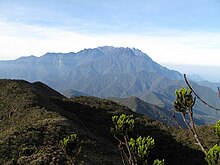
Mount Kinabalu viewed from the summit of nearby Mount Tambuyukon
- ^ Given the definition of the Malay Archipelago excluding New Guinea, where about 22 mountainsexceed 4100 m.
- ^ "World Top 50 Most Prominent Peaks" Peaklist.org. Retrieved 2011-11-21.
- ^ a b c d e f g h i j k Phillipps, A. & F. Liew 2000. Globetrotter Visitor's Guide – Kinabalu Park. New Holland Publishers (UK) Ltd.
- ^ UNESCO World Heritage Centre. "Kinabalu Park". Retrieved 7 June 2015.
- ^ Michael Aquino. "Mount Kinabalu, Malaysia". About.com Travel. Retrieved 7 June2015.
- ^ "Mount Kinabalu - revered abode of the dead". Retrieved 7 June 2015.
- ^ Richmond, S. (2010). Mt Kinabalu & Kinabalu National Park. In: Malaysia, Singapore & Brunei. Lonely Planet. ISBN 1741048877. pp. 357–364.
- ^ Parris, By. S., R. S. Beaman, and J. H. Beaman. 1992. The Plants of Mount Kinabalu: 1. Ferns and Fern Allies. Kew: Royal Botanic Gardens. 165 pp + 5 pl.
- ^ Wood, J. J., J. H. Beaman, and R. S. Beaman. 1993. The Plants of Mount Kinabalu. 2. Orchids. Kew: Royal Botanic Gardens. xii + 411 pp + 84 pl.
- ^ Beaman, J. H., and R. S. Beaman. 1998. The Plants of Mount Kinabalu. 3. Gymnosperms and Non-Orchid Monocotyledons. Kota Kinabalu: Natural History Publications (Borneo) Sdn. Bhd.; Kew: Royal Botanic Gardens. xii + 220 pp + 25 pl.
- ^ Beaman, J. H., C. Anderson, and R. S. Beaman. 2001. The plants of Mount Kinabalu. 4: Dicotyledon families Acanthaceae to Lythraceae. xiv + 570 pp + 45 pl. Kota Kinabalu: Natural History Publications (Borneo) Sdn. Bhd.; Kew: Royal Botanic Gardens.
- ^ Beaman, J. H., and C. Anderson. 2004. The plants of Mount Kinabalu. 5: Dicotyledon families Magnoliaceae to Winteraceae. xiv + 609 pp + 40 pl. Kota Kinabalu: Natural History Publications (Borneo) Sdn. Bhd.; Kew: Royal Botanic Gardens.
- ^ Merckx, V. S. F. T.; Hendriks, K. P.; Beentjes, K. K.; Mennes, C. B.; Becking, L. E.; Peijnenburg, K. T. C. A.; Afendy, A.; Arumugam, N.; de Boer, H.; Biun, A.; Buang, M. M.; Chen, P.-P.; Chung, A. Y. C.; Dow, R.; Feijen, F. A. A.; Feijen, H.; Feijen-van Soest, C; Geml, J.; Geurts, R.; Gravendeel, B.; Hovenkamp, P.; Imbun, P.; Ipor, I.; Janssens, S. B.; Jocqué, M.; Kappes, H.; Khoo, E.; Koomen, P.; Lens, F.; Majapun, R. J.; Morgado, L. N.; Neupane, S.; Nieser, N.; Pereira, J. T.; Rahman, H.; Sabran, S.; Sawang, A.; Schwallier, R. M.; Shim, P.-S.; Smit, H.; Sol, N.; Spait, M.; Stech, M.; Stokvis, F.; Sugau, J. B.; Suleiman, M.; Sumail, S.; Thomas, D. C.; van Tol, J.; Tuh, F. Y. Y.; Yahya, B. E.; Nais, J.; Repin, R.; Lakim, M.; Schilthuizen, M. (2015). "Evolution of endemism on a young tropical mountain". Nature 524: 347–350. doi:10.1038/nature14949.
- ^ Kurata, S. 1976. Nepenthes of Mount Kinabalu. Sabah National Parks Publications No. 2, Sabah National Parks Trustees, Kota Kinabalu.
- ^ Adam, J.H.; Wilcock, C.C. (1998). "Pitcher plants of Mt. Kinabalu in Sabah". The Sarawak Museum Journal 50 (71): 145–171.
- ^ Blakemore, R.J., C. Csuzdi, M.T. Ito, N. Kaneko, T. Kawaguchi & M. Schilthuizen 2007. Taxonomic status and ecology of Oriental Pheretima darnleiensis (Fletcher, 1886) and other earthworms (Oligochaeta : Megascolecidae) from Mt Kinabalu, Borneo. PDF (16.4 KiB)Zootaxa 1613: 23–44.
- ^ Liew, T.S.; Schilthuizen, M. (2010). "The determinants of land snail diversity along a tropical altitudinal gradient: insularity, geometry, and niches". Journal of Biogeography 37: 1071–1078. doi:10.1111/j.1365-2699.200902243.x.
- ^ "Kinabalu montane alpine meadows". Terrestrial Ecoregions. World Wildlife Fund.
- ^ Hiung, C. S., R. Mandalam, and C. Chin. 2004. The Hugh Low Trail: The Quest for the Historical Trail to the Summit of Kinabalu. The Sabah Society, Kota Kinabalu.
- ^ Kinabalu Park. UNESCO World Heritage Centre.
- ^ Star Media Group Berhad. "Sabah quake: Donkey'€™s Ear Peak on Mount Kinabalu destroyed - Nation - The Star Online". Retrieved 7 June 2015. C1 control character in
|title=at position 21 (help) - ^ Hannah Strange (10 June 2015). "British woman arrested in Malaysia over nude photos in Mount Kinabalu". The Daily Telegraph. Retrieved 11 June 2015.
- ^ Chris Kitching (5 June 2015). "Tourists' naked photo shoot atop Malaysian peak blamed for major earthquake as locals claim nudity angered 'mountain spirits'". Daily Mail. Retrieved 10 June 2015.
- ^ Michelle Tam; Stephanie Lee (5 June 2015). "Sabah quake: Mount Kinabalu may be "angry" with nudists, say locals". The Star. Retrieved 7 June 2015.
- ^ Julia Chan (2 June 2015). "Warned not to strip, naked tourists allegedly told guide to ‘go to hell’". The Malay Mail. Retrieved 11 June 2015.
- ^ Natasha Joibi (8 June 2015). "Sabah quake: Nude tourists shouted vulgarities at mountain guide". The Star. Retrieved 11 June 2015.
- ^ "Sabahans want 10 foreign stripper tourists charged in native court". Daily Express. 10 June 2015. Retrieved 10 June 2015.
- ^ "Five villages perform own rituals: Chief After unable to impose 'sogit' on nudists". Daily Express. 20 June 2015. Retrieved 22 June 2015.
- ^ [1]
- ^ Cymerman, A; Rock, PB. "Medical Problems in High Mountain Environments. A Handbook for Medical Officers". USARIEM-TN94-2. US Army Research Inst. of Environmental Medicine Thermal and Mountain Medicine Division Technical Report. Retrieved 5 March 2009.
- ^ "Leaders of lost expedition criticised". The Independent. Retrieved 7 June 2015.
- ^ Pat Wins His Battle With Low's Gully. Retrieved 15/06/2015
- ^ British climbers prepare to tame Low's Gully at BBC News. Retrieved 16 June 2015
- McIlroy, N. 2011. Man versus mountain. The West Australian, 9 July 2011.
External Links
 Mount Kinabalu travel guide from Wikivoyage
Mount Kinabalu travel guide from Wikivoyage- Mount Kinabalu website
- Sabah Parks website
- Plants of Mount Kinabalu
- Mount Kinabalu Tips
- List of climbers who have hiked Mount Kinabalu
Wikipedia


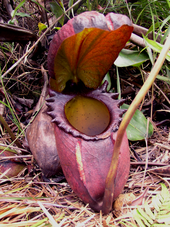
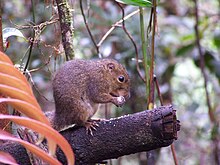
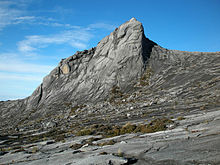









No comments:
Post a Comment